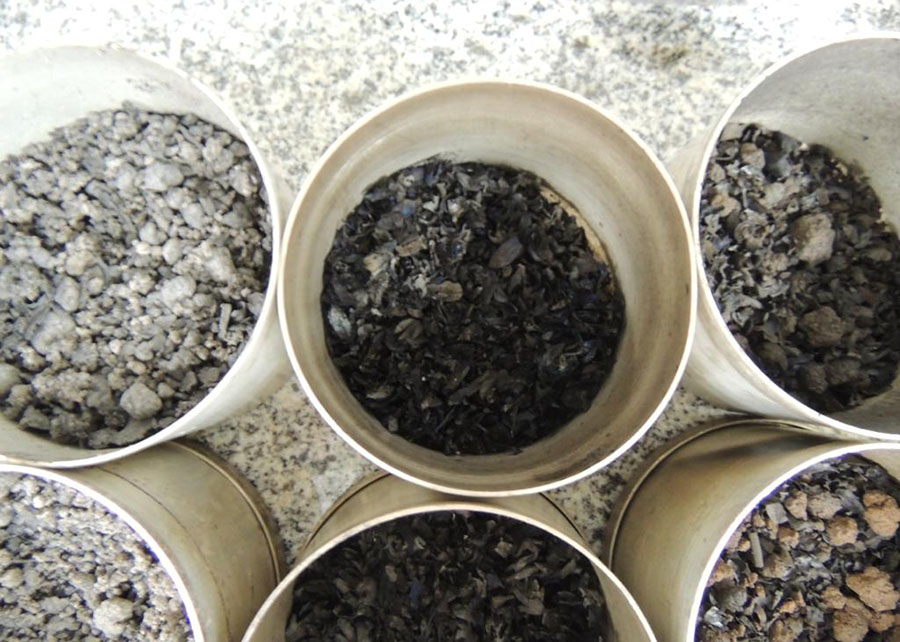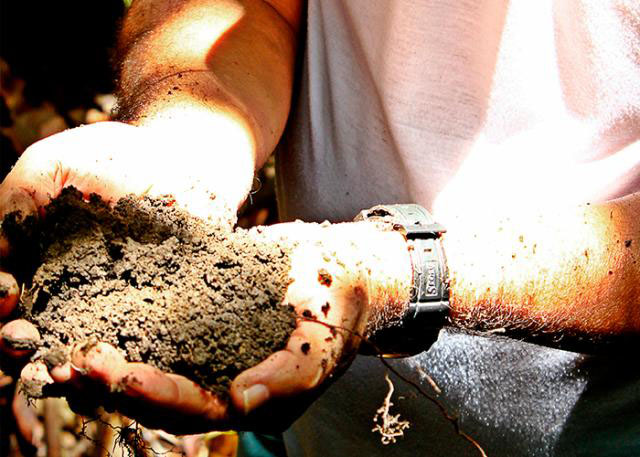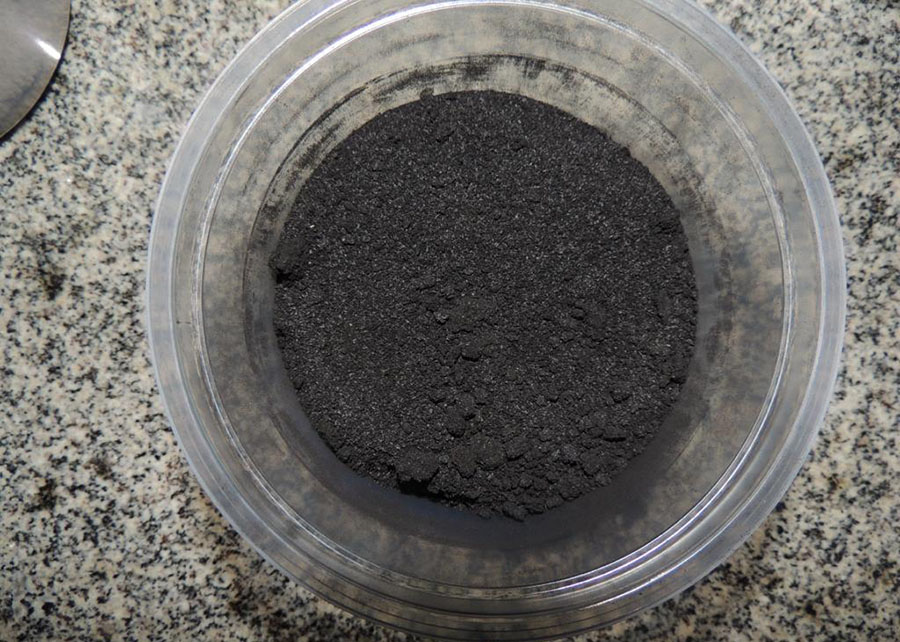Embrapa research with partners in Brazil and abroad developed an unprecedented process to obtain biochar that is simpler, more agile and more efficient. The organic-mineral compound that stems from the direct mix of the biochar with the soil showed good potential as a vehicle for fertilization. In addition to reducing nutrient loss, it adds environmental advantages, such as reduced greenhouse gas emissions and higher soil carbon sequestration. The study was inspired by Amazonian Dark Earths (ADEs), the basis of pre-Columbian indigenous agriculture. The compound generated by the study potencializes the use of fertilizers according to different types of soil. Technology is available for partnerships to co-develop biochar on a large scale Research developed by Embrapa Rondônia, in partnership with the Federal Rural University of Pernambuco (UFRPE), the Federal Institute of Rondônia (IFRO) , in Brazil, and the University of Santiago de Compostela (USC), Spain, resulted in an innovation that simplifies and accelerates the obtainment of biochar. This material has shown potential to produce organic-mineral fertilizers (obtained from raw materials from animal and plant sources), which can help Brazil to reduce its dependence on imported products. The technique reduces the stages required to produce biochar from three to one, because its combustion process already incorporates soil particles, unlike conventional ones, in which the produced coal needs to be activated first and then mixed to soil. The study also indicated potential environmental gains for the soil based on the use of the organic-mineral compound as vehicle for fertilizer applications. According to the Embrapa researcher Paulo Wadt, inert materials like sand are normally used to complete NPK (nitrogen/phosphorus/potassium) formulas, which does not benefit the earth. “The compound – which results from mixing biochar with soil – can reduce nutrient loss, increase the efficiency of fertilization and even add environmental advantages, such as reduced greenhouse gas (GHG) emissions and higher carbon sequestration”, he states. “We observed that the mix generates a product with better physical and chemical properties and can replace the sand in fertilizer applications, controlling the nutrient release into the soil-plant system. Currently, up to 80% of the phosphorus applied to the soil can be lost in chemical fixation processes, on top of losses of other nutrients”, the researcher adds. When used as a vehicle for mineral fertilizers, the organic-mineral compound gradually releases the nutrients in the soil, enabling the plants to obtain them throughout their development. When the nutrients are applied with inert materials, the release is immediate, making the plant use only a fraction of what was applied. The remainder is lost through different geochemical and biological processes. Finding solutions to reduce Brazil's reliance on imported fertilizers today is one of the priorities of agricultural research. The country currently consumes 40 million tons of fertilizers, 85% of which come from other countries, especially Russia. Wadt believes that the adoption of this new technology for biochar production can contribute to reducing fertilizer consumption, resulting in annual savings of about 10 million tons without losses in crop productivity. He explains that the results are at a laboratorial stage for the time being. “Embrapa is calling for a partner that will produce the compound on a commercial scale and meet the market demand”, he asserts. Combined knowledge to the benefit of agriculture The solution found by the researchers was inspired by pre-Columbian indigenous peoples, who performed the partial combustion of organic waste and mixed it to crop lands, creating the lands known as Amazonian Dark Earths. Once again, the knowledge exchange between science and traditional knowledge brings concrete benefits to agriculture. The dark earths, which are also called archaeological soils, are distinct from the surrounding soils due to their superior quality in terms of soil fertility and physical characteristics, such as aeration, water retention and organic carbon. Such soils also offer high resilience to soil quality degradation processes, and withstand more intensive machine management while maintaining their characteristics, such as higher drainage capacity combined with higher water retention and better nutrient availability, especially phosphorus, one of the factors limiting agricultural productivity in the absolute majority of Brazilian soils. Another advantage of these lands is the fact they fix carbon in recalcitrant forms that are resistant to microbial decomposition, which makes it remain chemically active in the soils for dozens to hundreds of years, providing several benefits. “Therefore, in addition to reducing nutrient losses and to the higher efficiency of fertilizers, this technology can contribute to sequestering from 15 to 45 million tons of carbon a year, depending on the ratio of organic-mineral compounnds in each NPK formula”, the researcher states. Wadt comments that “people marvel at certain ancient technologies, such as the Egyptian pyramids and the Mayan and Inca constructions in the South and Central Americas, but the dark earths are some of the greatest technological distinctions of the ancient civilizations”. According to him, many advanced studies have already been performed in an attempt to reproduce the qualities of dark earths in technological assets; however, they have reached few practical applications. “In this study, we considered the resources that those pre-Columbian populations had access, as they did not have large furnaces, reactors or industrial structures to produce biochar, activate the product and later apply it to the soil. So we kept it simple and practical, and the result was fantastic”, he celebrates. Potentialization of the use of fertilizers according to the crops Wadt explains that most scientific experiments use the pyrolysis technique (transformation into other substances by heating a mix or an organic compound) to produce coal that needs to be activated later and then mixed to the soil. “Our solution was simpler: making the pyrolysis of the organic material directly with the soil mix, which results in an already activated product with better physical and chemical properties”, he adds. According to IFRO professor Stella Matoso, one of the people responsible for the study, the first assays produced in laboratory were performed with soils with different physical and chemical characteristics and organic materials with different ratios of lignins (plant macro-molecules that are associated with the cell wall, whose role is to grand rigidity, impermeability and resistance to microbiological attacks). “The results were very positive and soon showed the advantage of this mix: we saw that we were producing a material of easy fragmentation and manipulation”, she summarizes. Studies for the chemical characterization of the organic-mineral compound were also held in Pernambuco, Brazil, and in Spain. According to the UFRPE professor Valdomiro Souza Júnior, this was a major methodological challenge that still he needs to be perfected. “Our research techniques separate the organic and mineral components so that they can be studied in isolation. In this case, we have a complex, chemically-rich organic-mineral compound with new physical properties, which puts us on the edge of knowledge in the area”, he remarks. “Our research showed that we can use organic materials with different ratios of lignins and carbohydrates to produce compounds with higher or lower rates of retention of the incorporated nutrients”, Matoso argues. Hence it is possible to potencialize the use of fertilizers according to the different types of crop: short, annual or perennial cycle, with better control of nutrient release according to plant requirements. Looking for partners to advance with the technology Both the technique to obtain the biochar and its characterization are well established. However, partners are needed to develop the product on a commercial scale, put it in the market and trade it. Anyone interested in partnerships should contact Embrapa Rondônia. Contact for research and business: cpafro.chpd@embrapa.br and cpafro.chtt@embrapa.br.
Photo: Stella Matoso
![Stella Matoso - Finding solutions to reduce Brazil's reliance on imported fertilizers today is one of the priorities of agricultural research Stella Matoso - Finding solutions to reduce Brazil's reliance on imported fertilizers today is one of the priorities of agricultural research]()
Finding solutions to reduce Brazil's reliance on imported fertilizers today is one of the priorities of agricultural research
Research developed by Embrapa Rondônia, in partnership with the Federal Rural University of Pernambuco (UFRPE), the Federal Institute of Rondônia (IFRO) , in Brazil, and the University of Santiago de Compostela (USC), Spain, resulted in an innovation that simplifies and accelerates the obtainment of biochar. This material has shown potential to produce organic-mineral fertilizers (obtained from raw materials from animal and plant sources), which can help Brazil to reduce its dependence on imported products. The technique reduces the stages required to produce biochar from three to one, because its combustion process already incorporates soil particles, unlike conventional ones, in which the produced coal needs to be activated first and then mixed to soil.
The study also indicated potential environmental gains for the soil based on the use of the organic-mineral compound as vehicle for fertilizer applications. According to the Embrapa researcher Paulo Wadt, inert materials like sand are normally used to complete NPK (nitrogen/phosphorus/potassium) formulas, which does not benefit the earth. “The compound – which results from mixing biochar with soil – can reduce nutrient loss, increase the efficiency of fertilization and even add environmental advantages, such as reduced greenhouse gas (GHG) emissions and higher carbon sequestration”, he states.
“We observed that the mix generates a product with better physical and chemical properties and can replace the sand in fertilizer applications, controlling the nutrient release into the soil-plant system. Currently, up to 80% of the phosphorus applied to the soil can be lost in chemical fixation processes, on top of losses of other nutrients”, the researcher adds.

When used as a vehicle for mineral fertilizers, the organic-mineral compound gradually releases the nutrients in the soil, enabling the plants to obtain them throughout their development. When the nutrients are applied with inert materials, the release is immediate, making the plant use only a fraction of what was applied. The remainder is lost through different geochemical and biological processes.
Finding solutions to reduce Brazil's reliance on imported fertilizers today is one of the priorities of agricultural research. The country currently consumes 40 million tons of fertilizers, 85% of which come from other countries, especially Russia. Wadt believes that the adoption of this new technology for biochar production can contribute to reducing fertilizer consumption, resulting in annual savings of about 10 million tons without losses in crop productivity.
He explains that the results are at a laboratorial stage for the time being. “Embrapa is calling for a partner that will produce the compound on a commercial scale and meet the market demand”, he asserts.
 Combined knowledge to the benefit of agriculture Combined knowledge to the benefit of agriculture
The solution found by the researchers was inspired by pre-Columbian indigenous peoples, who performed the partial combustion of organic waste and mixed it to crop lands, creating the lands known as Amazonian Dark Earths. Once again, the knowledge exchange between science and traditional knowledge brings concrete benefits to agriculture. The dark earths, which are also called archaeological soils, are distinct from the surrounding soils due to their superior quality in terms of soil fertility and physical characteristics, such as aeration, water retention and organic carbon. Such soils also offer high resilience to soil quality degradation processes, and withstand more intensive machine management while maintaining their characteristics, such as higher drainage capacity combined with higher water retention and better nutrient availability, especially phosphorus, one of the factors limiting agricultural productivity in the absolute majority of Brazilian soils. Another advantage of these lands is the fact they fix carbon in recalcitrant forms that are resistant to microbial decomposition, which makes it remain chemically active in the soils for dozens to hundreds of years, providing several benefits. “Therefore, in addition to reducing nutrient losses and to the higher efficiency of fertilizers, this technology can contribute to sequestering from 15 to 45 million tons of carbon a year, depending on the ratio of organic-mineral compounnds in each NPK formula”, the researcher states. Wadt comments that “people marvel at certain ancient technologies, such as the Egyptian pyramids and the Mayan and Inca constructions in the South and Central Americas, but the dark earths are some of the greatest technological distinctions of the ancient civilizations”. According to him, many advanced studies have already been performed in an attempt to reproduce the qualities of dark earths in technological assets; however, they have reached few practical applications. “In this study, we considered the resources that those pre-Columbian populations had access, as they did not have large furnaces, reactors or industrial structures to produce biochar, activate the product and later apply it to the soil. So we kept it simple and practical, and the result was fantastic”, he celebrates. |
 Potentialization of the use of fertilizers according to the crops
Potentialization of the use of fertilizers according to the crops
Wadt explains that most scientific experiments use the pyrolysis technique (transformation into other substances by heating a mix or an organic compound) to produce coal that needs to be activated later and then mixed to the soil. “Our solution was simpler: making the pyrolysis of the organic material directly with the soil mix, which results in an already activated product with better physical and chemical properties”, he adds.
According to IFRO professor Stella Matoso, one of the people responsible for the study, the first assays produced in laboratory were performed with soils with different physical and chemical characteristics and organic materials with different ratios of lignins (plant macro-molecules that are associated with the cell wall, whose role is to grand rigidity, impermeability and resistance to microbiological attacks). “The results were very positive and soon showed the advantage of this mix: we saw that we were producing a material of easy fragmentation and manipulation”, she summarizes.
Studies for the chemical characterization of the organic-mineral compound were also held in Pernambuco, Brazil, and in Spain. According to the UFRPE professor Valdomiro Souza Júnior, this was a major methodological challenge that still he needs to be perfected. “Our research techniques separate the organic and mineral components so that they can be studied in isolation. In this case, we have a complex, chemically-rich organic-mineral compound with new physical properties, which puts us on the edge of knowledge in the area”, he remarks.
“Our research showed that we can use organic materials with different ratios of lignins and carbohydrates to produce compounds with higher or lower rates of retention of the incorporated nutrients”, Matoso argues. Hence it is possible to potencialize the use of fertilizers according to the different types of crop: short, annual or perennial cycle, with better control of nutrient release according to plant requirements.
Looking for partners to advance with the technology Both the technique to obtain the biochar and its characterization are well established. However, partners are needed to develop the product on a commercial scale, put it in the market and trade it. Anyone interested in partnerships should contact Embrapa Rondônia. Contact for research and business: cpafro.chpd@embrapa.br and cpafro.chtt@embrapa.br. |
Fernanda Diniz (MTb 4685 (DRT DF))
Embrapa Rondônia
Contact in Rondônia, Brazil: Dulcinea Conceição de Souza
Embrapa Rondônia
Press inquiries
rondonia.imprensa@embrapa.br
Phone number: +55 69 3219.5011
Translation: Mariana Medeiros (13044/DF)
Superintendency of Communications
Further information on the topic
Citizen Attention Service (SAC)
www.embrapa.br/contact-us/sac/

 Potentialization of the use of fertilizers according to the crops
Potentialization of the use of fertilizers according to the crops

